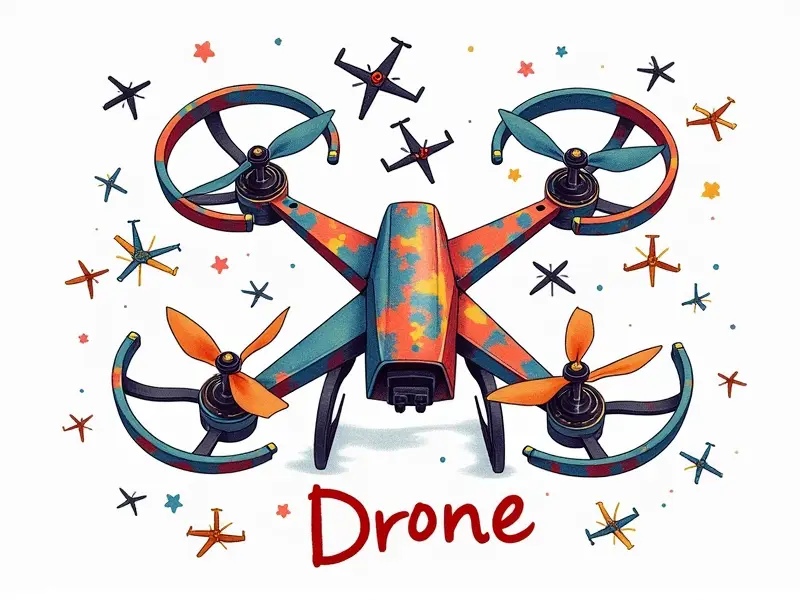Can I tune my FPV motor?

Tuning Your FPV Motor: A Comprehensive Guide
How to Tune Your FPV Motor Perfectly
Tuning your FPV (First Person View) motor is a crucial step in ensuring that your drone performs at its best. This process involves adjusting various parameters such as voltage, current draw, and propeller size to achieve optimal flight characteristics.
Understanding the Basics of Motor Tuning
- Voltage: The electrical input that powers the motor.
- Current Draw: How much power your motor consumes during operation.
- Propeller Size: Affects thrust and efficiency.
Steps to Perfect Motor Tuning
- Measure the current draw at various throttle settings.
- Adjust voltage based on performance needs.
- Select appropriate propeller sizes for different flight modes.
Boost Your FPV Flight with Motor Tuning
Motor tuning is essential to enhance the overall flying experience of your FPV drone. By optimizing motor parameters, you can achieve better stability, faster speeds, and longer flight times.
Improving Stability and Control
- Balanced Power Output: Ensures all motors work in harmony.
- Reduced Vibrations: Minimizes unwanted shakes during flight.
Increasing Speed and Agility
Tuning your motor can significantly boost the speed and agility of your drone. This is particularly important for racing pilots who need to navigate tight courses quickly and efficiently.
Achieving Peak Efficiency in FPV Motors
Efficiency is key when it comes to FPV motors, especially if you're looking to maximize flight duration or reduce battery consumption. Proper tuning can help achieve this balance between performance and energy efficiency.
Evaluating Motor Performance Metrics
- Thrust-to-Weight Ratio: Determines how quickly your drone can ascend.
- Battery Consumption Rate: Measures overall flight duration.
Simplified Steps to Tune FPV Motors
The process of tuning an FPV motor might seem daunting at first, but it becomes much simpler when broken down into manageable steps. Follow these guidelines to get started:
1. Gather Necessary Tools and Equipment
- Multimeter for measuring voltage and current.
- Laptop or tablet with tuning software.
- Voltage regulator (ESC).
2. Monitor Current Draw
Measure the amount of power your motor uses at different throttle settings to identify areas that need adjustment.
3. Adjust Voltage Settings
Tweak voltage levels based on observed performance characteristics and desired outcomes.
Example
- If you notice sluggish acceleration, increase the voltage slightly.
Tips for Perfecting FPV Motor Performance
Here are some practical tips to further refine your motor tuning process:
Benchmark Your Drone's Current State
- Initial Setup: Document baseline performance metrics.
- Progress Tracking: Monitor changes over time to assess improvements.
Experiment with Different Propellers
Varying propeller sizes and types can yield significant differences in flight dynamics, so it's worth testing multiple options during the tuning process.
The Art of Fine-Tuning FPV Motors
Fine-tuning your FPV motor requires a delicate balance between performance enhancement and practicality. It's an art form that combines technical knowledge with hands-on experience to achieve the perfect setup for any given scenario.
Understanding the Impact of Environmental Factors
- Air Density: Affects lift generation and thrust efficiency.
- Temperature Variations: Can influence motor performance.
Quick Guide to Optimizing FPV Motors
This quick guide summarizes the key points for optimizing your FPV motors:
Step-by-Step Optimization Process
- Calibrate your ESC (Electronic Speed Controller).
- Tune voltage settings based on performance needs.
- Select appropriate propeller sizes.
- Benchmark and track improvements over time.
Maximize Performance with FPV Motor Tuning
Motor tuning is a powerful tool for maximizing the performance of your FPV drone. By carefully adjusting motor parameters, you can unlock new levels of speed, agility, stability, and efficiency that will elevate your flying experience.
Unlocking New Possibilities in Drone Racing
- Faster Lap Times: Achieve quicker speeds around the track.
- Better Maneuverability: Navigate tight turns with ease.
Essential Guide to FPV Motor Calibration
A thorough understanding of motor calibration is essential for anyone looking to get the most out of their FPV drone. This guide covers everything you need to know about calibrating your motors:
Calibration Process Overview
- Initial Calibration: Setting up ESC and motor parameters.
- Ongoing Calibration: Fine-tuning settings for optimal performance.
Fine-Tuning Your FPV Motor for Racing
For racing pilots, fine-tuning your FPV motor is crucial to staying ahead of the competition. This section focuses on specific techniques and strategies that can give you an edge in high-stakes races:
Tips for Competitive Edge
- Optimize Power Output: Balance speed with stability.
- Reduce Drag: Enhance aerodynamics for faster speeds.
DIY Guide to FPV Motor Optimization
If you're interested in taking your motor tuning skills to the next level, consider building and testing custom setups. This DIY guide provides a framework for experimenting with different components:
Building Custom Solutions
- Select High-Quality Components: Start with reliable parts.
- Test Thoroughly: Validate performance under various conditions.
With these tips and techniques, you'll be well on your way to achieving optimal motor tuning for your FPV drone. Remember that the key lies in balancing speed, stability, efficiency, and practicality based on your specific needs and goals.
Conclusion
Motor tuning is a critical aspect of maximizing the performance of your FPV drone. By following these guidelines and tips, you can unlock new levels of speed, agility, stability, and efficiency that will enhance your flying experience and give you an edge in competitive racing scenarios.

